Abstract
Some determinants of the reinforcing and punishing properties of timeout were investigated in two experiments. Experiment I began as an attempt to reduce the frequency of tantrums in a 6-yr-old autistic girl by using timeout. Unexpectedly, the result was a substantial increase in the frequency of tantrums. Using a reversal design, subsequent manipulations showed that the opportunity to engage in self-stimulatory behavior during the timeout period was largely responsible for the increase in tantrums. Experiment II was initiated following the failure of timeout to reduce the spitting and self-injurious behavior of a 16-yr-old retarded boy. Using a multiple-baseline design, the nature of the timein environment was shown to be an important determinant of the effects of timeout. When the timein environment was "enriched", timeout was effective as a punisher. A conception of timeout in terms of the relative reinforcing properties of timein and timeout and their clinical implications are discussed.
Full text
PDF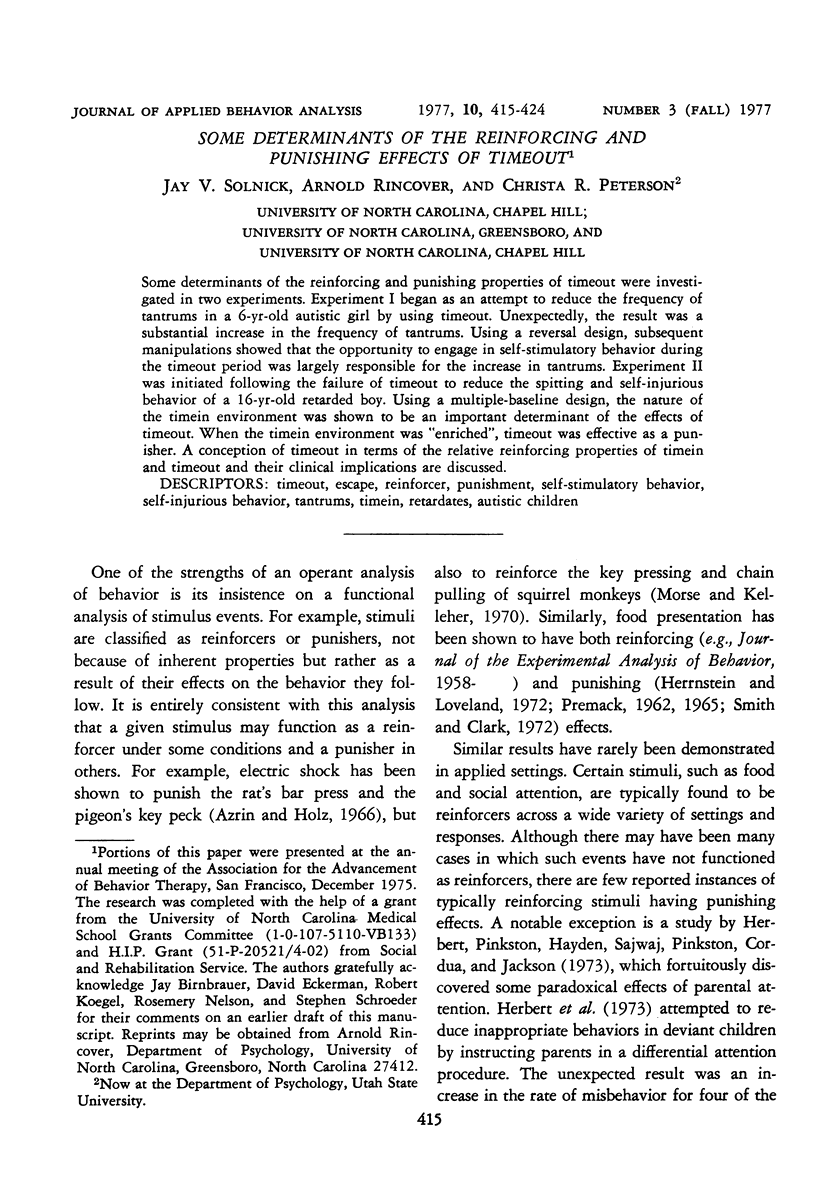
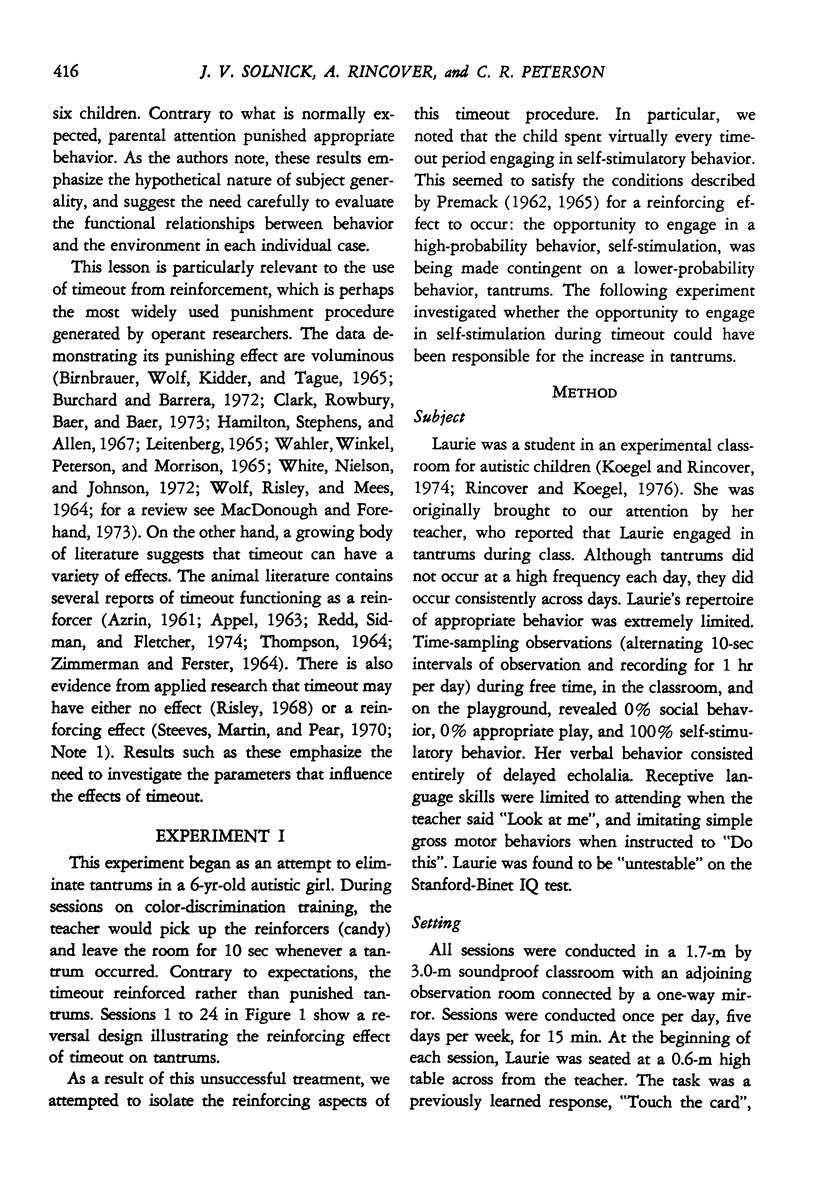
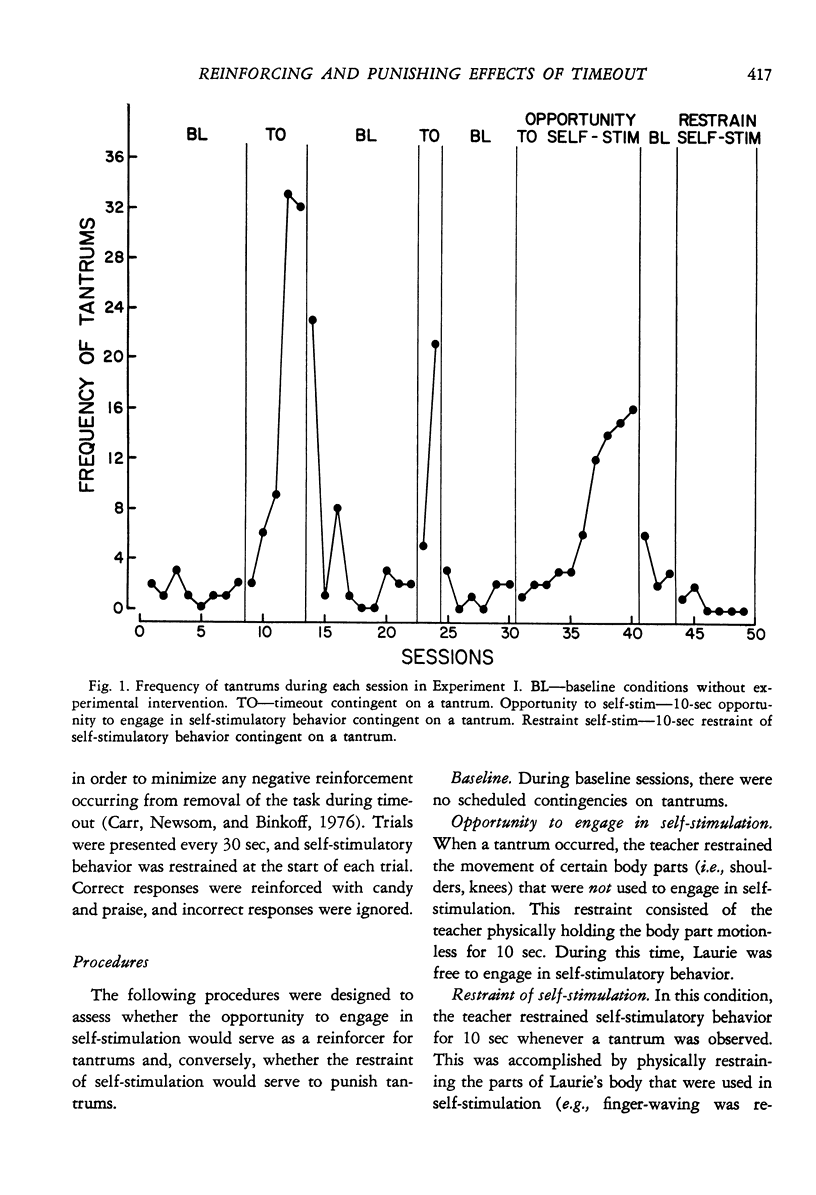
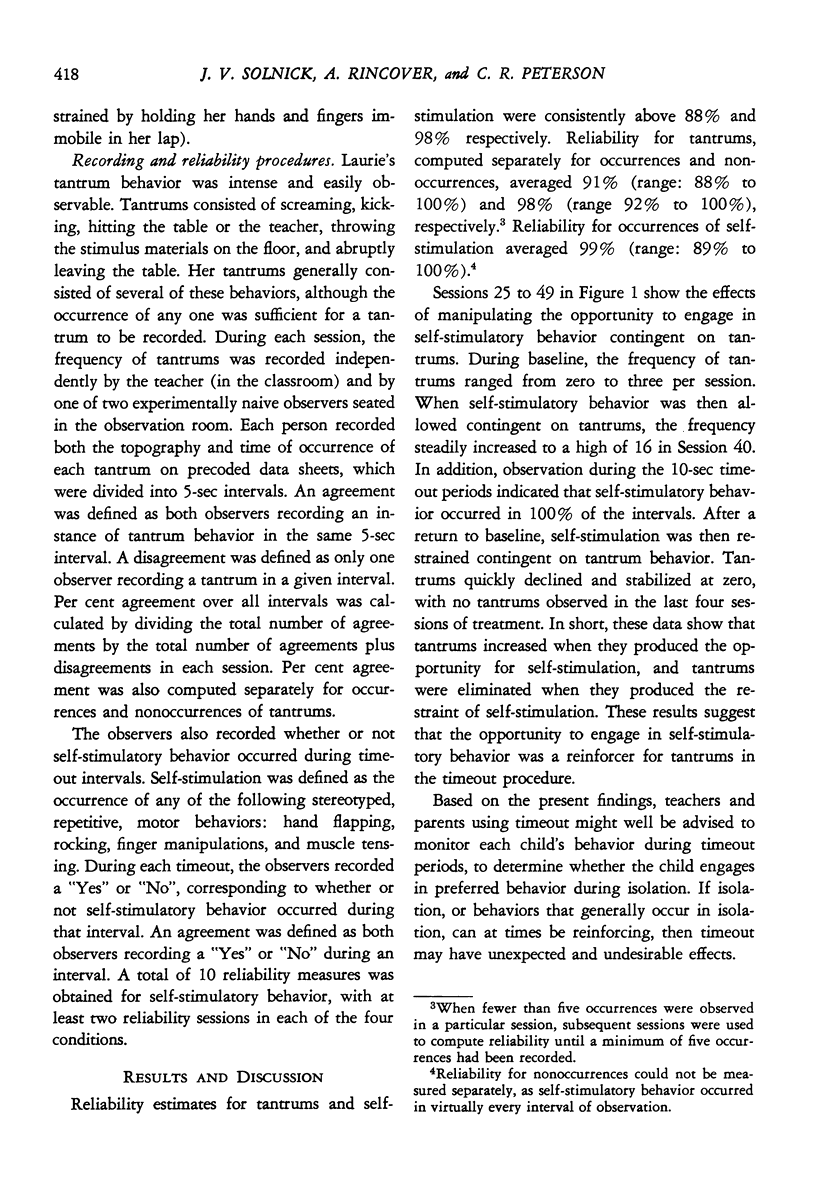
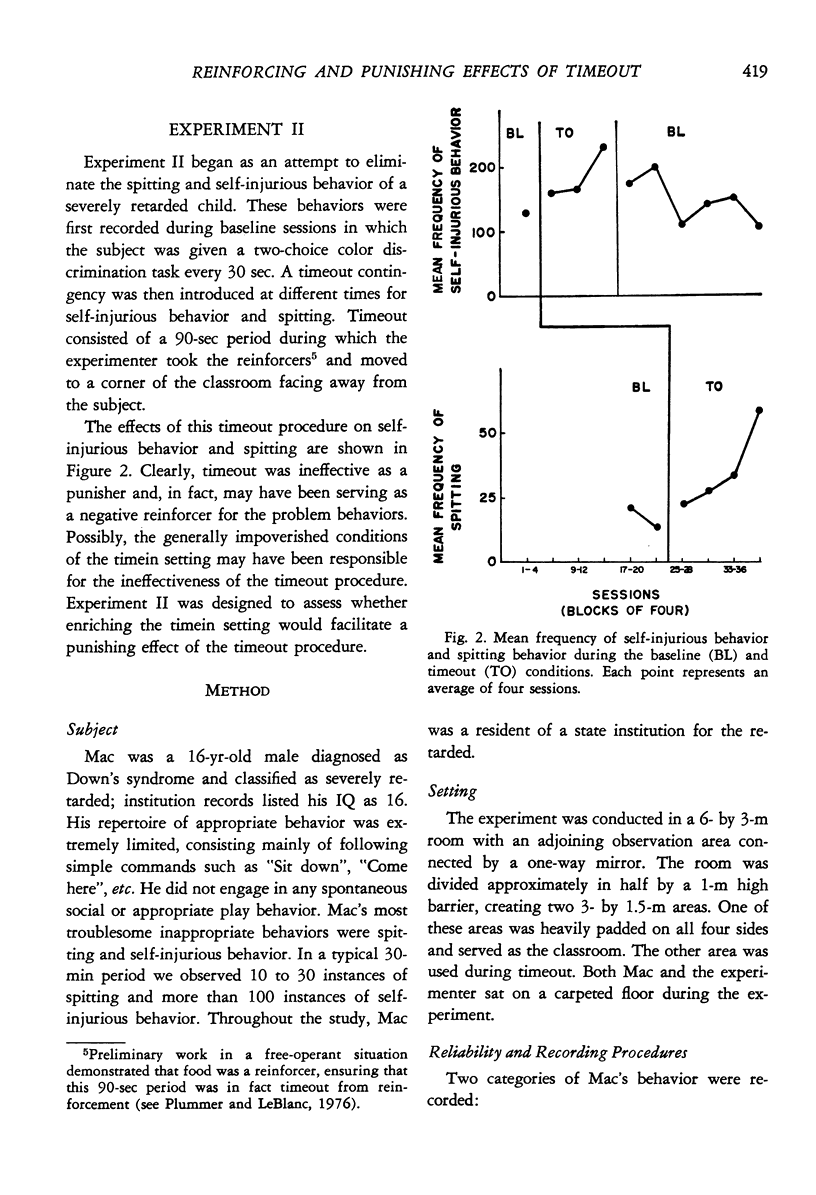
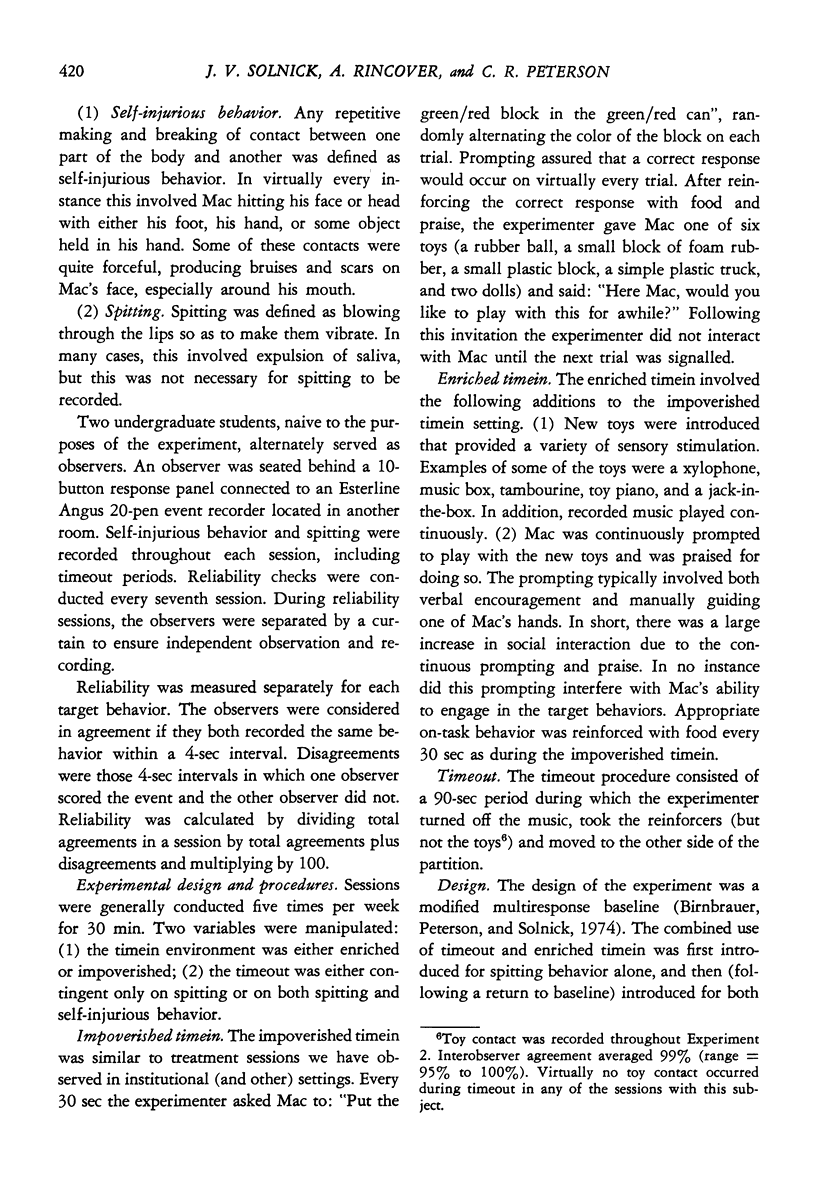
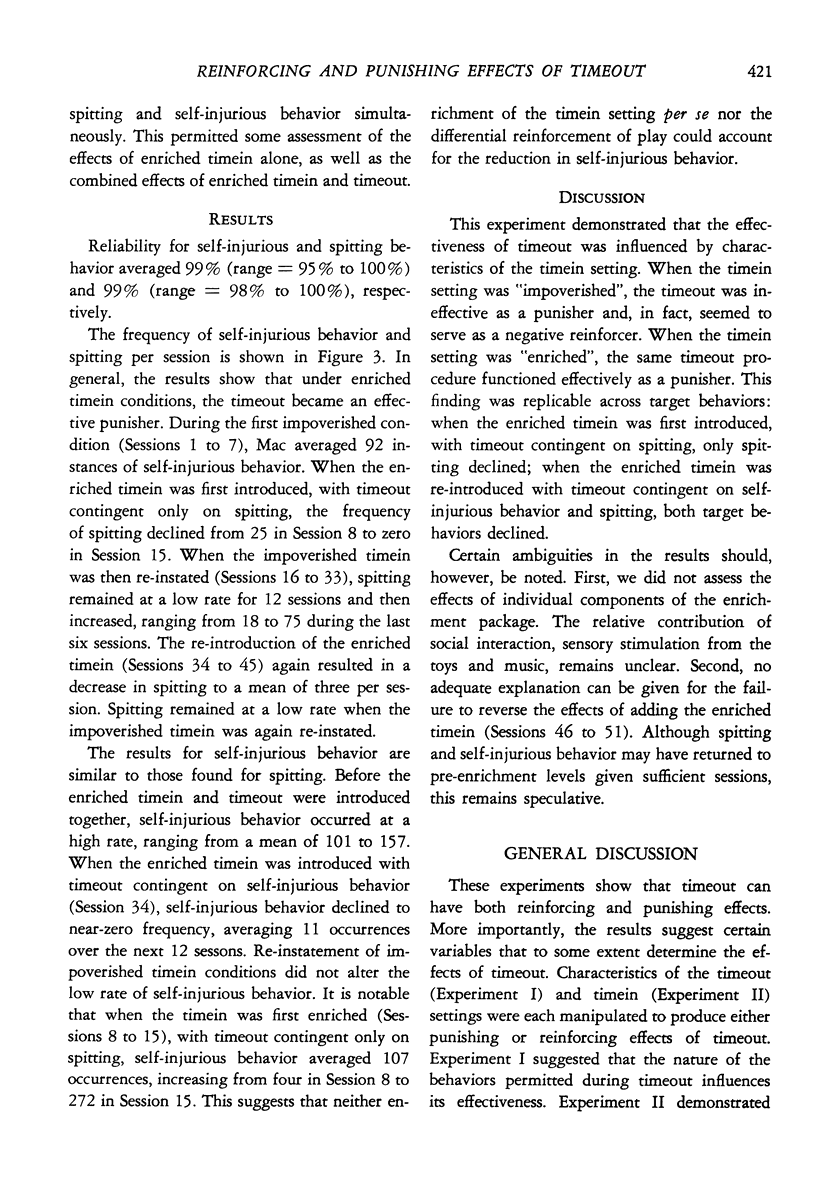
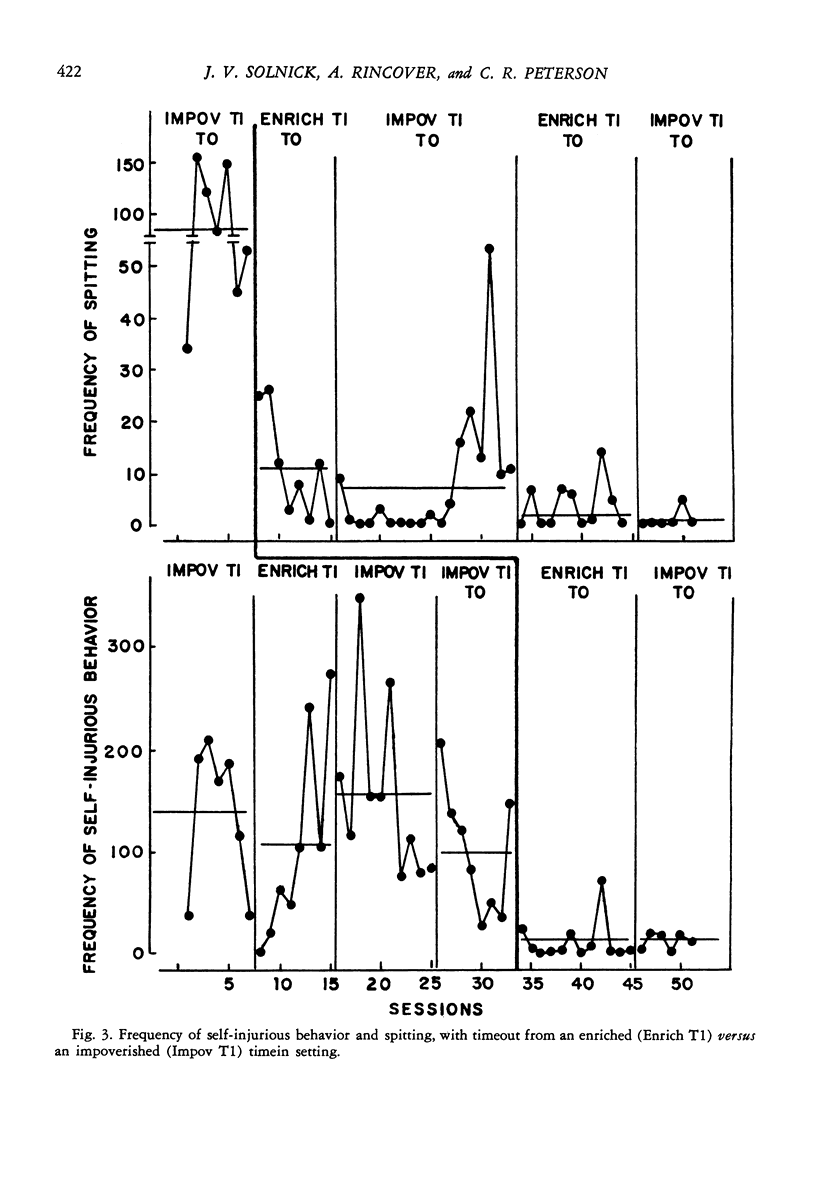
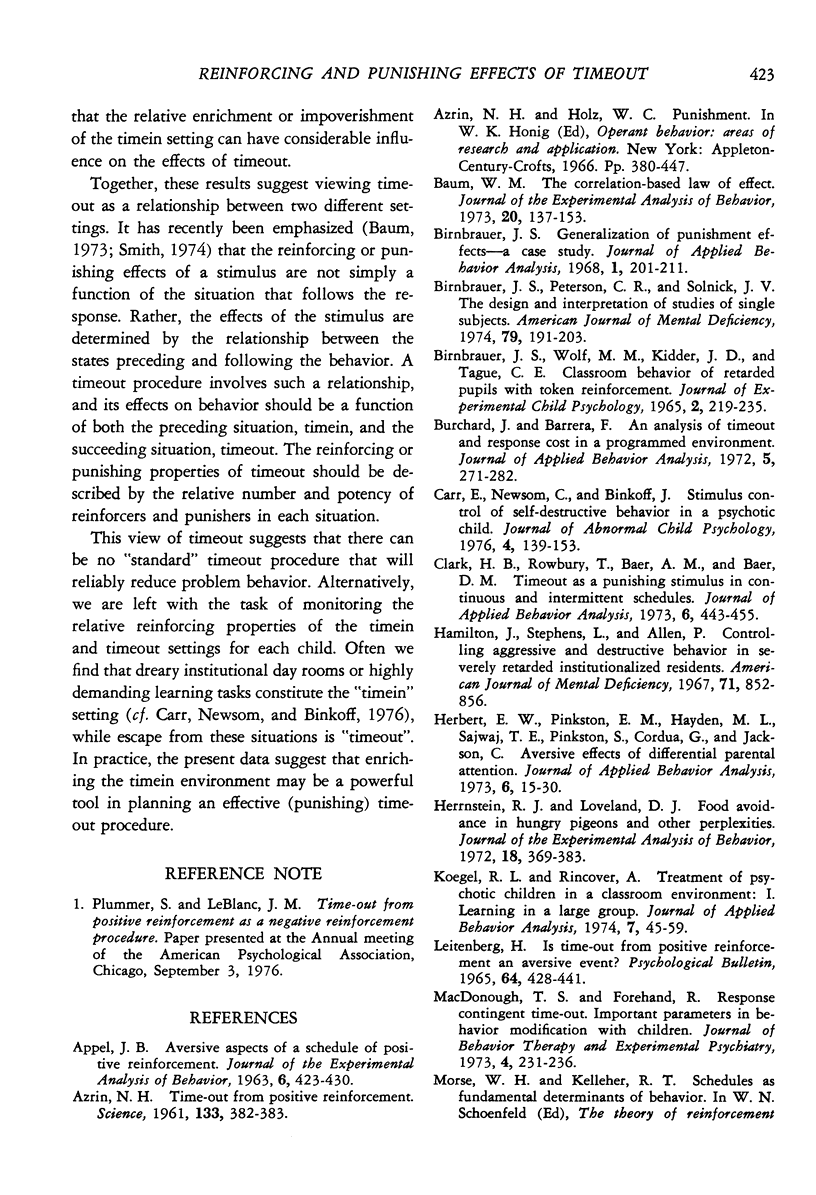
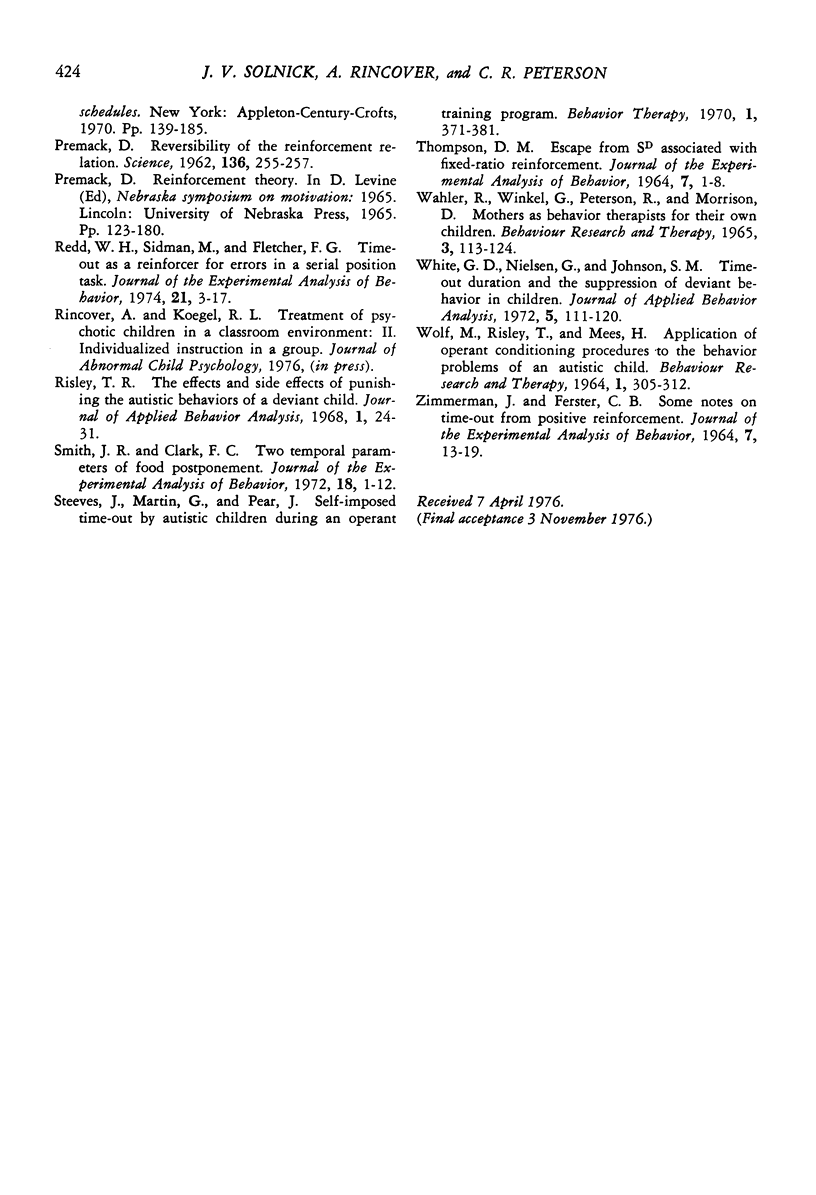
Selected References
These references are in PubMed. This may not be the complete list of references from this article.
- APPEL J. B. Aversive aspects of a schedule of positive reinforcement. J Exp Anal Behav. 1963 Jul;6:423–428. doi: 10.1901/jeab.1963.6-423. [DOI] [PMC free article] [PubMed] [Google Scholar]
- AZRIN N. H. Time-out from positive reinforcement. Science. 1961 Feb 10;133(3450):382–383. doi: 10.1126/science.133.3450.382. [DOI] [PubMed] [Google Scholar]
- Baum W. M. The correlation-based law of effect. J Exp Anal Behav. 1973 Jul;20(1):137–153. doi: 10.1901/jeab.1973.20-137. [DOI] [PMC free article] [PubMed] [Google Scholar]
- Birnbrauer J. S. Design and interpretation of studies of single subjects. Am J Ment Defic. 1974 Sep;79(2):191–203. [PubMed] [Google Scholar]
- Birnbrauer J. S. Generalization of punishment effects-a case study. J Appl Behav Anal. 1968 Fall;1(3):201–211. doi: 10.1901/jaba.1968.1-201. [DOI] [PMC free article] [PubMed] [Google Scholar]
- Burchard J. D., Barrera F. An analysis of timeout and response cost in a programmed environment. J Appl Behav Anal. 1972 Fall;5(3):271–282. doi: 10.1901/jaba.1972.5-271. [DOI] [PMC free article] [PubMed] [Google Scholar]
- Carr E. G., Newsom C. D., Binkoff J. A. Stimulus control of self-destructive behavior in a psychotic child. J Abnorm Child Psychol. 1976;4(2):139–153. doi: 10.1007/BF00916518. [DOI] [PubMed] [Google Scholar]
- Clark H. B., Rowbury T., Baer A. M., Baer D. M. Timeout as a punishing stimulus in continuous and intermittent schedules. J Appl Behav Anal. 1973 Fall;6(3):443–455. doi: 10.1901/jaba.1973.6-443. [DOI] [PMC free article] [PubMed] [Google Scholar]
- Herrnstein R. J., Loveland D. H. Food-avoidance in hungry pigeons, and other perplexities. J Exp Anal Behav. 1972 Nov;18(3):369–383. doi: 10.1901/jeab.1972.18-369. [DOI] [PMC free article] [PubMed] [Google Scholar]
- Koegel R. L., Rincover A. Treatment of psychotic children in a classroom environment: I. Learning in a large group. J Appl Behav Anal. 1974 Spring;7(1):45–59. doi: 10.1901/jaba.1974.7-45. [DOI] [PMC free article] [PubMed] [Google Scholar]
- Leitenberg H. Is time-out from positive reinforcement an aversive event? A review of the experimental evidence. Psychol Bull. 1965 Dec;64(6):428–441. doi: 10.1037/h0022657. [DOI] [PubMed] [Google Scholar]
- PREMACK D. Reversibility of the reinforcement relation. Science. 1962 Apr 20;136(3512):255–257. doi: 10.1126/science.136.3512.255. [DOI] [PubMed] [Google Scholar]
- Redd W. H., Sidman M., Fletcher F. G. Timeout as a reinforcer for errors in a serial position task. J Exp Anal Behav. 1974 Jan;21(1):3–17. doi: 10.1901/jeab.1974.21-3. [DOI] [PMC free article] [PubMed] [Google Scholar]
- Sajwaj T. E., Pinkston S., Cordua G., Jackson C. Adverse effects of differential parental attention. J Appl Behav Anal. 1973 Spring;6(1):15–30. doi: 10.1901/jaba.1973.6-15. [DOI] [PMC free article] [PubMed] [Google Scholar]
- Smith J. B., Clark F. C. Two temporal parameters of food postponement. J Exp Anal Behav. 1972 Jul;18(1):1–12. doi: 10.1901/jeab.1972.18-1. [DOI] [PMC free article] [PubMed] [Google Scholar]
- THOMPSON D. M. ESCAPE FROM SD ASSOCIATED WITH FIXED-RATIO REINFORCEMENT. J Exp Anal Behav. 1964 Jan;7:1–8. doi: 10.1901/jeab.1964.7-1. [DOI] [PMC free article] [PubMed] [Google Scholar]
- Wahler R. G., Winkel G. H., Peterson R. F., Morrison D. C. Mothers as behavior therapists for their own children. Behav Res Ther. 1965 Sep;3(2):113–124. doi: 10.1016/0005-7967(65)90015-x. [DOI] [PubMed] [Google Scholar]
- White G. D., Nielsen G., Johnson S. M. Timeout duration and the suppression of deviant behavior in children. J Appl Behav Anal. 1972 Summer;5(2):111–120. doi: 10.1901/jaba.1972.5-111. [DOI] [PMC free article] [PubMed] [Google Scholar]
- ZIMMERMAN J., FERSTER C. B. SOME NOTES ON TIME OUT FROM REINFORCEMENT. J Exp Anal Behav. 1964 Jan;7:13–19. doi: 10.1901/jeab.1964.7-13. [DOI] [PMC free article] [PubMed] [Google Scholar]


